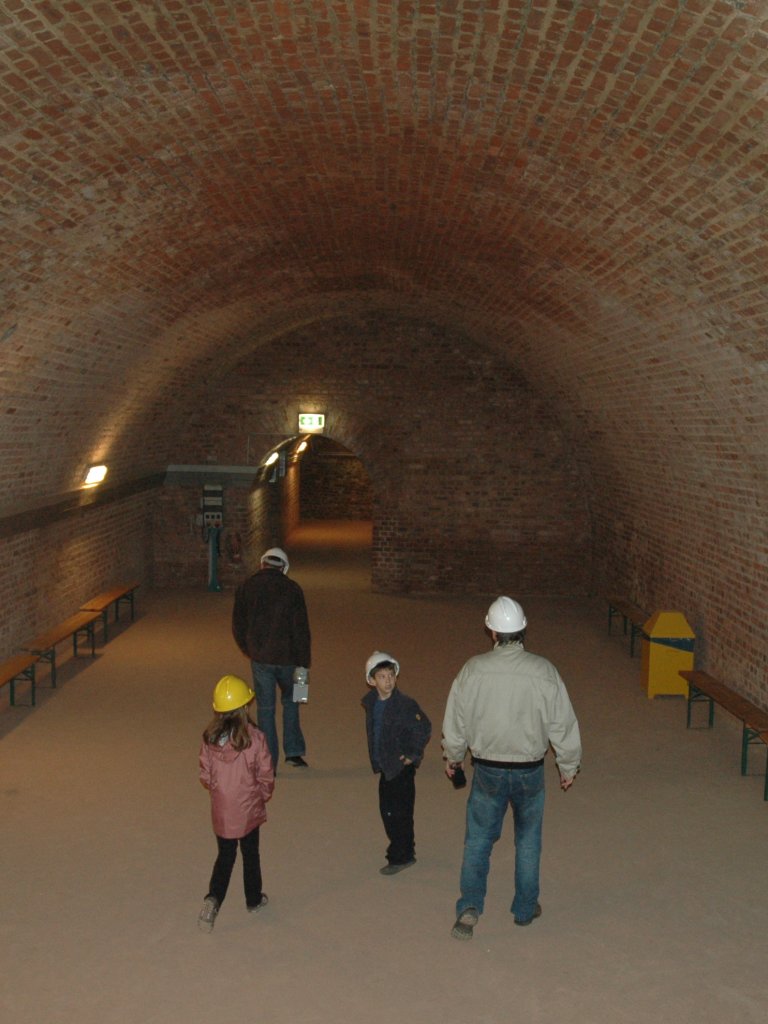« Circular thinking ..... | Main | Mothering Sunday »
March 01, 2008
The Hohenburg
On top of the hill into which Europe's biggest coloured sandstone caves have been dug are the remains of a former castle and fortress, The Hohenburg.
Part of today's remains of the Hohenburg
The Hohenburg was first mentioned in 1123. In 1351 it was sold to Count Wolram of Zweibrücken and finally castle and town fell to the Counts of Nassau in 1453. During the Thirty Years' War (1618-1648) Hohenburg's archives were moved to Idstein and later to Frankfurt. Unfortunately all documents were lost somehow and the Counts of Nassau couldn't prove their ownership of the castle, town and the surrounding lands and forests any longer. The castle was finally conquered by the Imperial troops after it had beaten them back several times. Fortunately for the Counts of Nassau Emperor Ferdinand III gave Hohenburg back to them during the Westphalian Peace Treaty in 1648.
In the late 17th century the French King Louis XIV strengthened his eastern border and Hohenburg was just perfect for turning it into a fortress. This plan was carried out by his famous engineer Sebastian de Vauban who turned the castle into a fortress, built a strong wall around the town and added four bastions - Deuxponts, Fontaine, D'Mure and D'Autage.

Model of Castle and Town during in the late 18th century. The trademark of Sebastian de Vauban is easily recognisable.
According to the Peace Treaty of Rastatt in 1714 Louis XIV had to give Hohenburg back to Emperor Karl VI which he wasn't prepared to do, of course. The French soldiers blew up the whole fortress leaving only a pile of rubble for the Germans. Obviously no one took the trouble of rebuilding the castle ever since.
The Federal State "Saarland" of which the Hohenburg is a part has always been of interest both to France and Germany because of its coal and steel industry. After various attempts of France to annex the Saarland in the first half of the 20th century in 1948 the Saarland even became an independent state, though not internationally recognised. But during this period the Saarland had a national football team and almost stopped the Germans qualifying for the football world championships in 1954. It doesn't bear thinking of if the Saarlanders had become world champions instead of the Germans...
In 1955 the population of the Saarland voted against becoming part of France or a western union and instead opted for joining the Bundesrepublik Deutschland, the Federal Republic of Germany, which they did in 1957. But in the early 1950's a bunker was built into parts of the sandstone caves underneath the Hohenburg. It was supposed to provide shelter for the government of the Saarland in case of a nuclear strike.

The bunker that was never finished
In order to keep the population in ignorance of this bunker a hotel was erected on top of the hill, right beside the ruins of the Hohenburg at the same time the bunker was built. The hotel, however, was finished while work on the bunker was stopped after 1955. Apparently, parts of the bunker are still used for local festivities by the local townsfolk. A very good idea, Mausi thinks.
Posted by Mausi at March 1, 2008 02:36 PM
Trackback Pings
TrackBack URL for this entry:
http://mt3.mu.nu/mt/mt-tb.cgi/5343